TEKS Math 6
(1) The desire to achieve educational excellence is the driving force behind the Texas essential knowledge and skills for mathematics, guided by the college and career readiness standards. By embedding statistics, probability, and finance, while focusing on computational thinking, mathematical fluency, and solid understanding, Texas will lead the way in mathematics education and prepare all Texas students for the challenges they will face in the 21st century.
(2) The process standards describe ways in which students are expected to engage in the content. The placement of the process standards at the beginning of the knowledge and skills listed for each grade and course is intentional. The process standards weave the other knowledge and skills together so that students may be successful problem solvers and use mathematics efficiently and effectively in daily life. The process standards are integrated at every grade level and course. When possible, students will apply mathematics to problems arising in everyday life, society, and the workplace. Students will use a problem-solving model that incorporates analyzing given information, formulating a plan or strategy, determining a solution, justifying the solution, and evaluating the problem-solving process and the reasonableness of the solution. Students will select appropriate tools such as real objects, manipulatives, algorithms, paper and pencil, and technology and techniques such as mental math, estimation, number sense, and generalization and abstraction to solve problems. Students will effectively communicate mathematical ideas, reasoning, and their implications using multiple representations such as symbols, diagrams, graphs, computer programs, and language. Students will use mathematical relationships to generate solutions and make connections and predictions. Students will analyze mathematical relationships to connect and communicate mathematical ideas. Students will display, explain, or justify mathematical ideas and arguments using precise mathematical language in written or oral communication.
(3) The primary focal areas in Grade 6 are number and operations; proportionality; expressions, equations, and relationships; and measurement and data. Students use concepts, algorithms, and properties of rational numbers to explore mathematical relationships and to describe increasingly complex situations. Students use concepts of proportionality to explore, develop, and communicate mathematical relationships. Students use algebraic thinking to describe how a change in one quantity in a relationship results in a change in the other. Students connect verbal, numeric, graphic, and symbolic representations of relationships, including equations and inequalities. Students use geometric properties and relationships, as well as spatial reasoning, to model and analyze situations and solve problems. Students communicate information about geometric figures or situations by quantifying attributes, generalize procedures from measurement experiences, and use the procedures to solve problems. Students use appropriate statistics, representations of data, and reasoning to draw conclusions, evaluate arguments, and make recommendations. While the use of all types of technology is important, the emphasis on algebra readiness skills necessitates the implementation of graphing technology.
(4) Statements that contain the word "including" reference content that must be mastered, while those containing the phrase "such as" are intended as possible illustrative examples.
- Free Plan
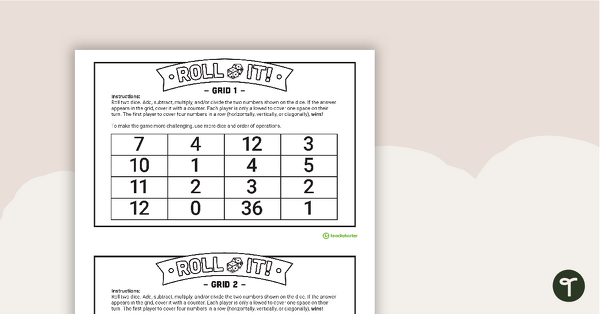
Roll It! Operations Game
Use this fun game to practice all four operations and/or order of operations.
- Free Plan
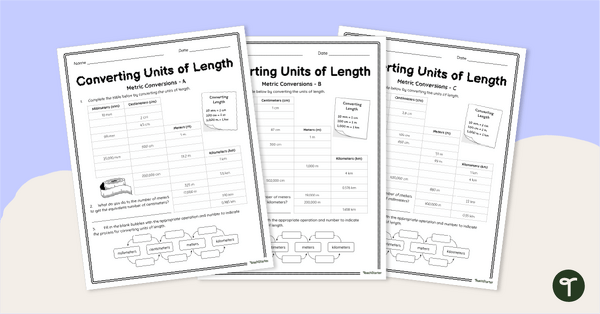
Converting Units of Length – Worksheets
Demonstrate an understanding of decimal representations while converting metric units of length with printable conversion worksheets.
- Free Plan
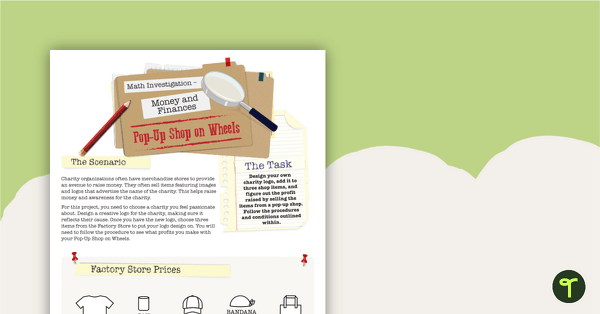
Financial Literacy Math Investigation – Pop–Up Shop on Wheels
A mathematics investigation involving financial literacy, embedded in a real-world context.
- Plus Plan
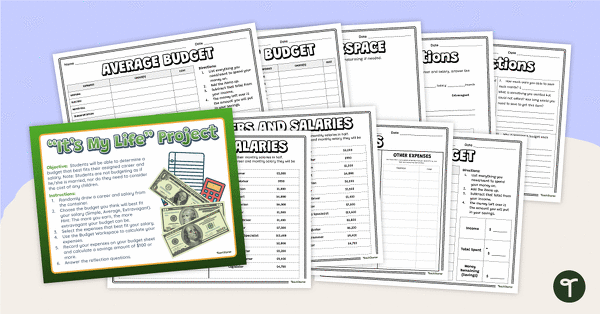
Math in the Real World - Budgeting Planning Project
Introduce your students to the world of making a budget with an immersive “It’s My Life” budgeting for kids project.
- Free Plan
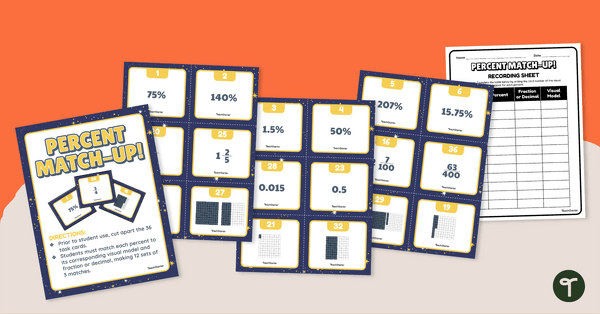
Percent Match-Up!
Match fractions, decimals, and percentages with this printable math activity.
- Plus Plan
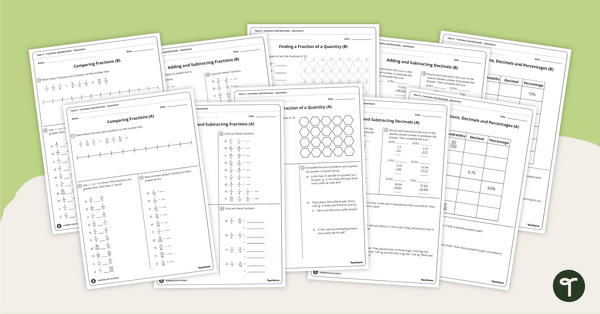
Fractions, Decimals and Percentages Worksheets
Use these fractions, decimals and percentages worksheets in your upper elementary classroom for independent practice or as an assessment activity.
- Free Plan
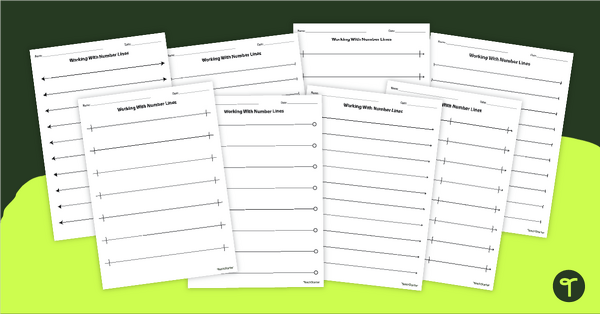
Blank Number Lines - Printable
Print a set of open number lines to help you teach a variety of math skills.
- Free Plan
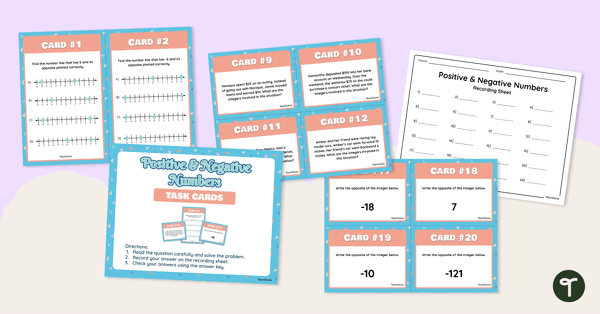
Positive & Negative Numbers – Task Cards
Practice identifying integers and their opposites with this set of 24 task cards.
- Free Plan
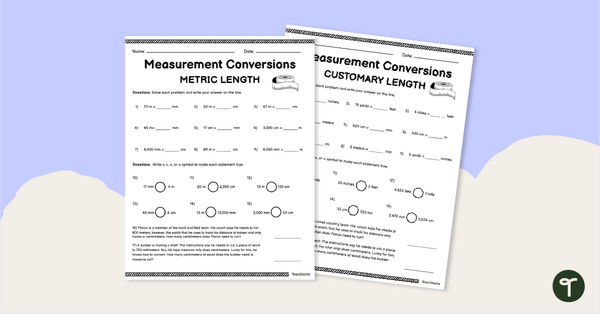
Measurement Conversions - Length – Worksheet
Use ratio reasoning to practice converting length measurements with this worksheet.
- Plus Plan
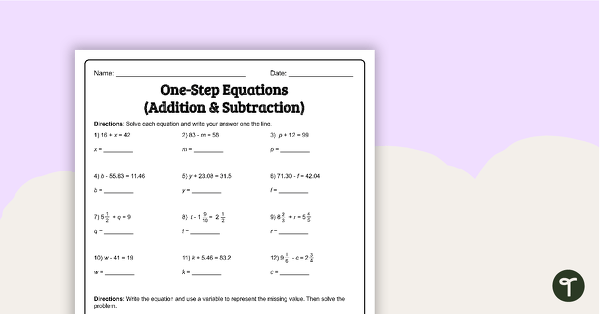
One-Step Equations (Addition and Subtraction) – Worksheet
Explore pre-algebra concepts by adding and subtracting whole numbers, decimals, and fractions with this one-step equations worksheet.
- Plus Plan
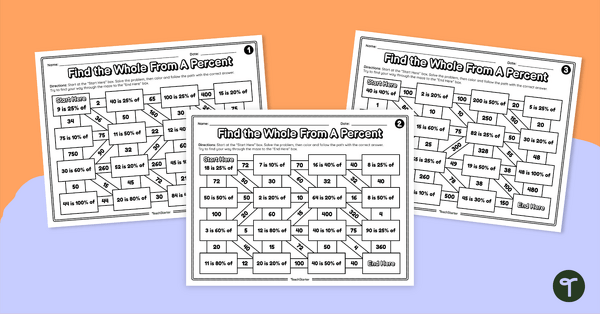
Find the Whole From a Percent – Math Mazes
Find your way through this set of 3 math mazes while solving 6th-grade percentage problems.
- Free Plan
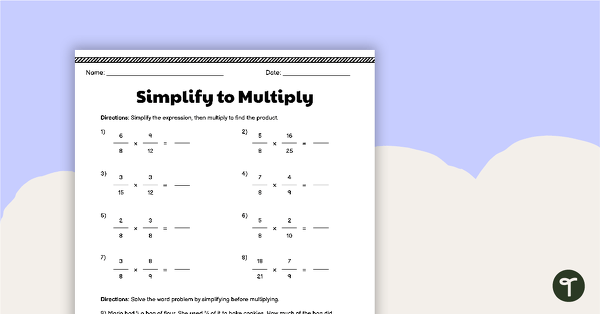
Simplify to Multiply – Multiplying Fractions Worksheet
Practice how to simplify fractions before multiplying with this worksheet.
- Free Plan
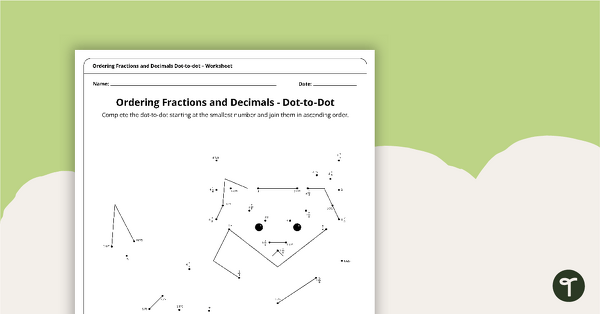
Complex Dot-to-dot Worksheet – Ordering Fractions and Decimals (Cat)
Practice ordering fractions and decimals with this complex dot-to-dot worksheet.
- Plus Plan
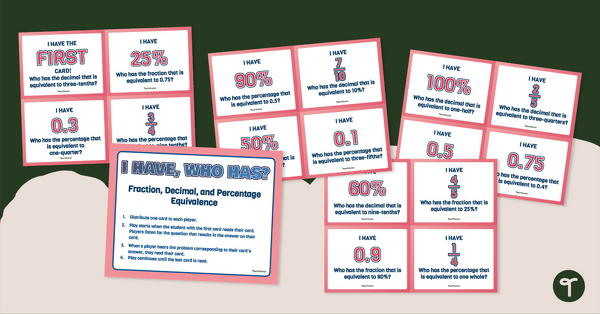
I Have, Who Has? Game – Fraction, Decimal and Percentage Equivalence
Reinforce students' understanding of fraction, decimal and percentage equivalence with a whole-class game.
- Plus Plan
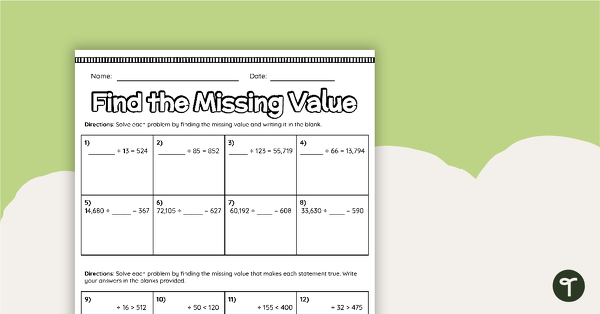
Find the Missing Value – Division Worksheet
Strengthen understanding of inverse operations by finding the missing value of each division equation.
- Plus Plan
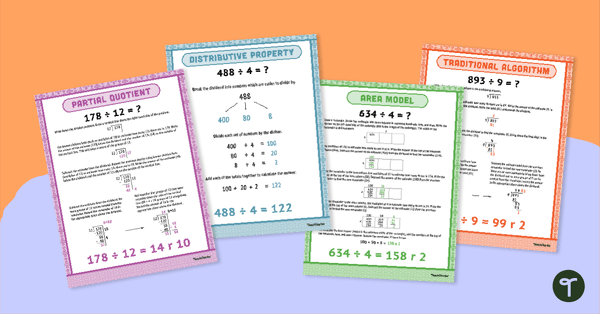
Long Division Strategy Posters
Use this set of 4 posters when teaching different long division strategies.
- Free Plan
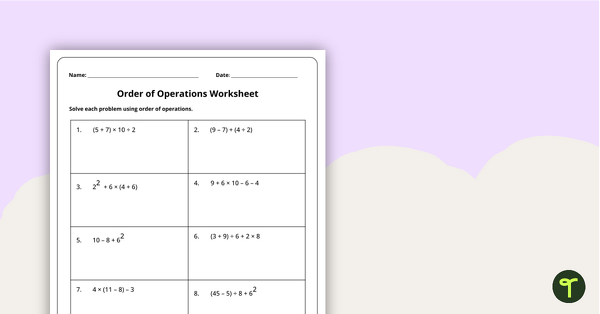
Order of Operations Worksheet
Solve equations using the order of operations with this one-page worksheet.
- Free Plan
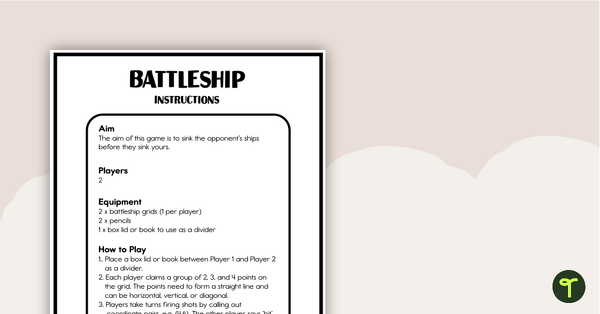
Battleship Coordinate Grid Game
Practice using ordered pairs with this fun battleship game.
- Free Plan
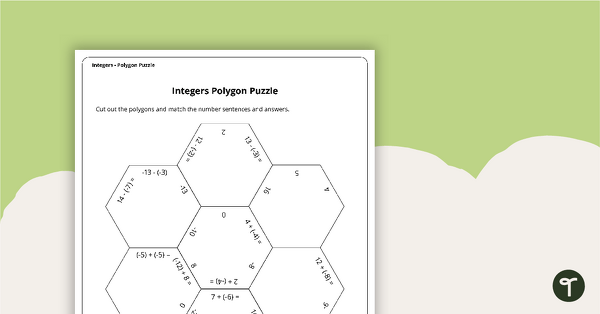
Integers Polygon Puzzle
A puzzle using positive and negative numbers in number sentences.
- Free Plan
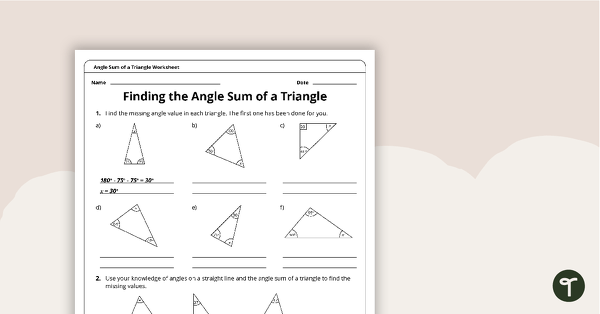
Angle Sum of a Triangle – 6th Grade Math Worksheet
Calculate the missing angle in a variety of triangles with this one-page worksheet.
- Plus Plan
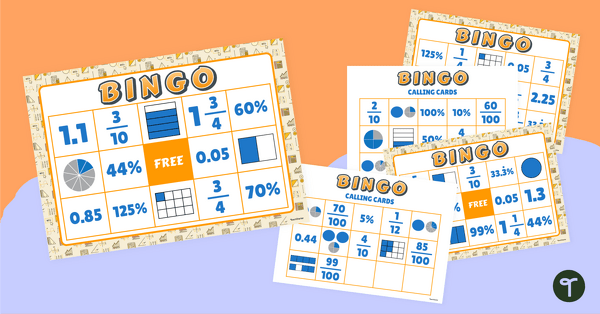
Fraction, Decimal, and Percentage Bingo
Convert between fractions, decimals and percentages with this engaging Bingo game the whole class can enjoy!
- Plus Plan
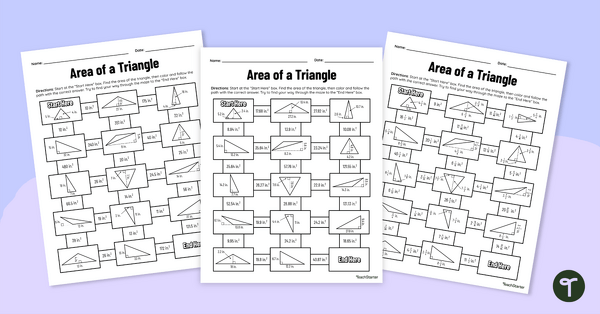
Area of a Triangle – Differentiated Math Mazes
Use the area of a triangle formula as you work your way through this set of differentiated math mazes.
- Plus Plan
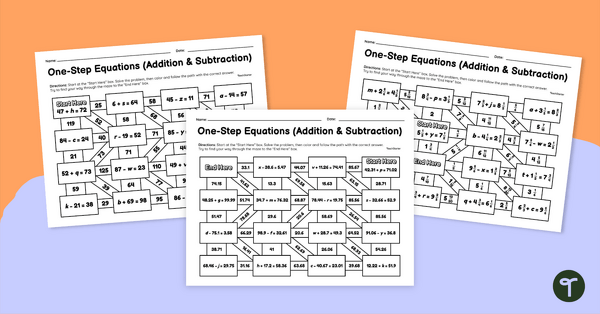
One-Step Equations (Addition and Subtraction) – Math Mazes
Practice solving one-step equations with whole numbers, decimals, and mixed numbers while working through a set of 3 math mazes.
- Plus Plan
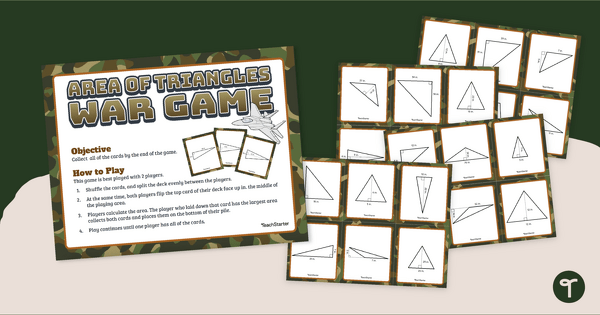
Triangle War - Area of a Triangle Math Game
Practice finding and comparing the area of a triangle with a game of WAR!
- Plus Plan
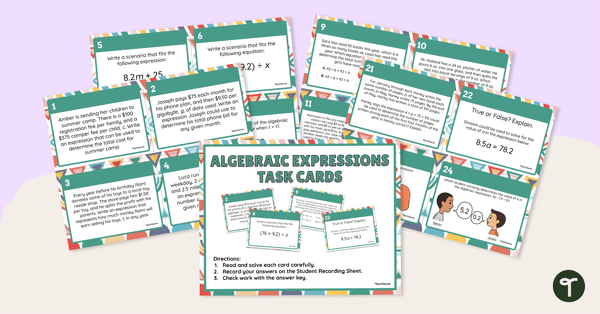
Algebraic Expressions – Task Cards
Read, write, and solve algebraic expressions with this set of 24 task cards.
- Plus Plan
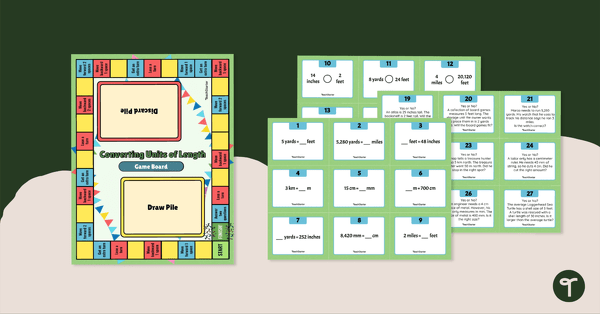
Converting Units of Length – Board Game
Engage your students with a lively board game while practicing how to convert customary and metric units of length.
- Free Plan
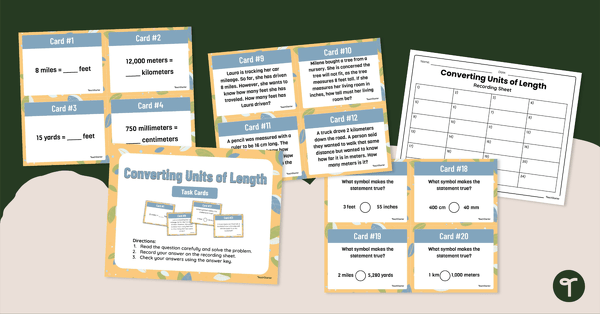
Converting Units of Length – Task Cards
Use ratio reasoning to convert the length of metric and customary units with this set of 24 task cards.
- Plus Plan
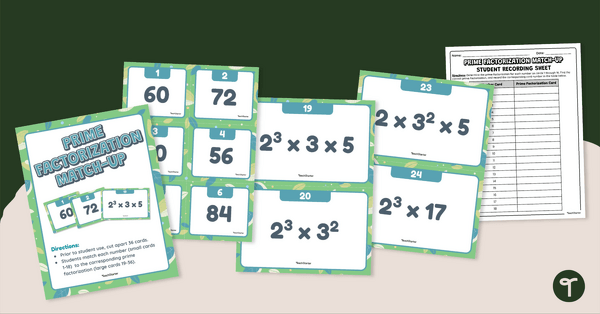
Prime Factorization Match-Up
Practice how to find the prime factorization of a number with this match-up activity.
- Plus Plan
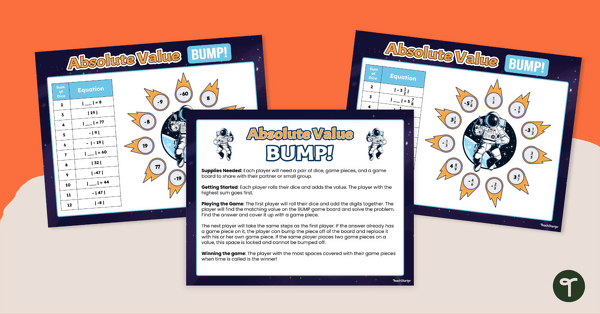
Absolute Value – Bump! Games
Find the absolute value of whole numbers, decimals, and fractions with this set of Bump! games.
- Plus Plan
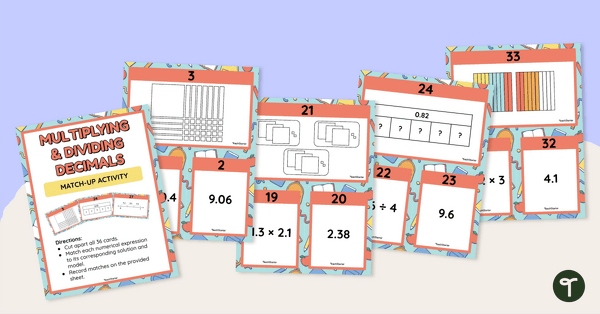
Multiplying and Dividing Decimals Match-Up
Solve equations involving multiplication and division of decimals with this match-up activity.
- Free Plan
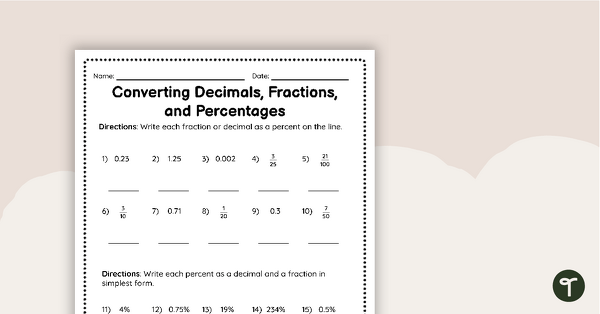
Converting Decimals, Fractions, and Percentages – Worksheet
Strengthen your students’ understanding of how to convert a percent to a decimal and a fraction with this worksheet.
- Plus Plan
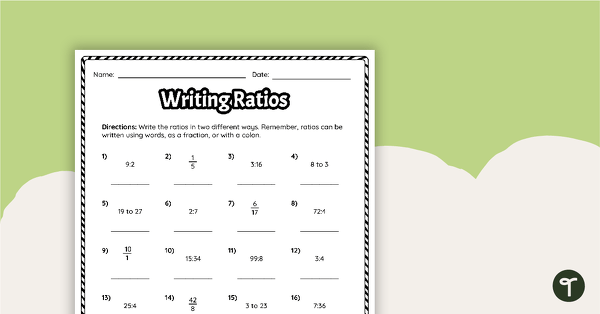
Writing Ratios – Worksheet
With this worksheet, practice representing ratios as a fraction, with a colon, or with words.